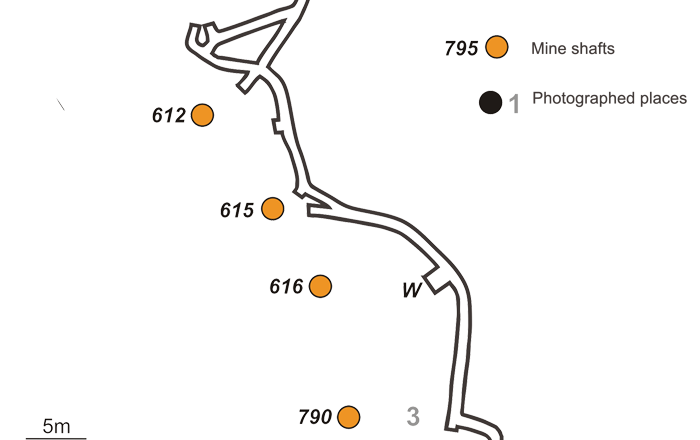Tourists first came to see the mines in the late 1950s after Tadeusz Żurowski cleared the underground parts in the vicinity of Shafts nos 1, 2 and 3. The idea for a subterranean gallery that would allow tourists to walk comfortably instead of crawling through narrow pits dates to 25 years later. Excavations conducted by the State Archaeological Museum in Warsaw in the late 1970s and in the 1980s led to the execution of the first short section of such an underground tunnel running around Shafts 1,2 and 3 (Tourist Route 1, opened in 1985).
Five years later a tourist gallery around the well preserved Chamber mine 7/610 was completed (Tourist Route 2). Since 1990 tourists have had the opportunity to see this Neolithic mine through special inspection windows allowing a look inside the mining pits.
The latest stage in the organization of the underground tourist network is a gallery joining routes 1 and 2. This work was done in 2001–2004 by a team from the Historical-Archaeological Museum in Ostrowiec Świętokrzyski. Part of the newest section of the route runs through Neolithic pillar-chamber mining pits, while the connecting sections were excavated in limestone rock, passing inside the natural flint-bearing bank.
The tourist route in its present form is 465 m long, descending 11.5 m at the deepest point. It provides for an organized sightseeing of excellently preserved prehistoric mines of banded flint and introduces visitors to the geology of the region. As an added element, it shows how the prehistoric mines were protected and preserved in the past half a century. The underground tourist route in Krzemionki is the world’s only such monument open regularly to visitors.
 |
||||||||||||
|
|
|
|
||||||||||
|
|
||||||||||||
 |
||||||||||||
|
|
|
|
||||||||||
 |
||||||||||||
|
|
|
|
|
|
||||||||
 |
||||||||||||
|
|
|
|
|
|
||||||||
|
|
|
|
||||||||||
 |
||||||||||||
|
|
|
|
|
|
|
|
|
|
|
|
|
|
